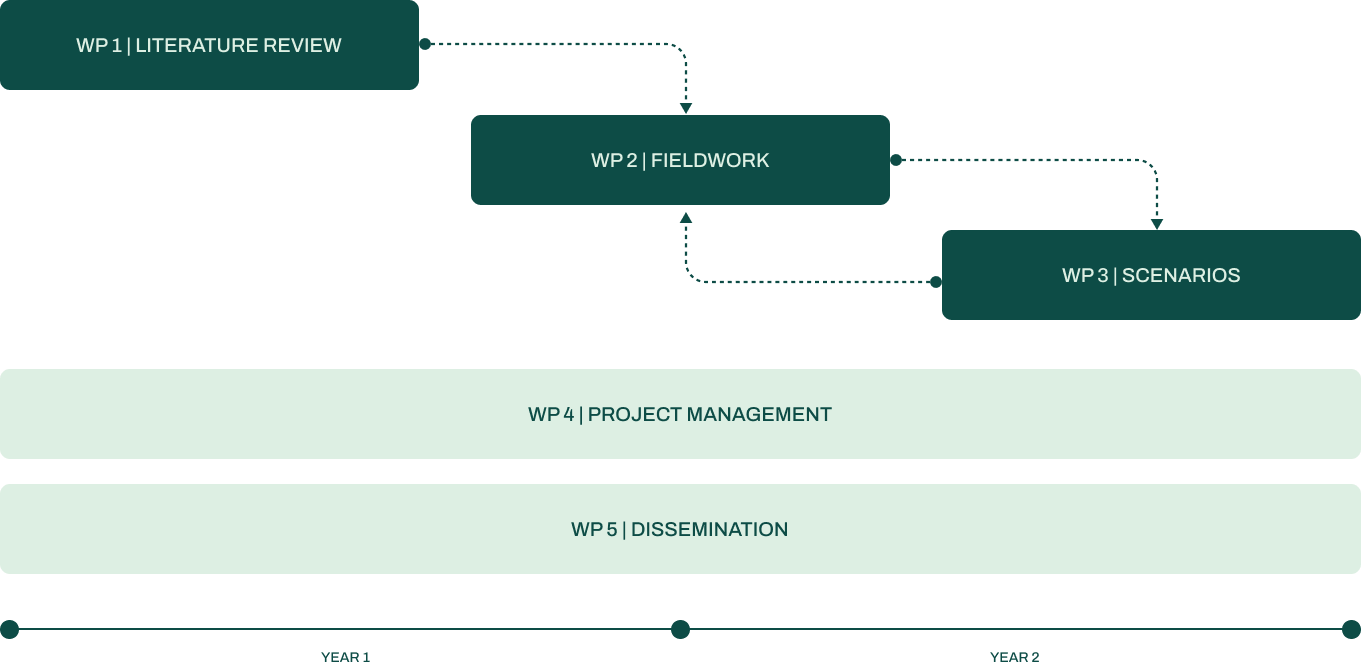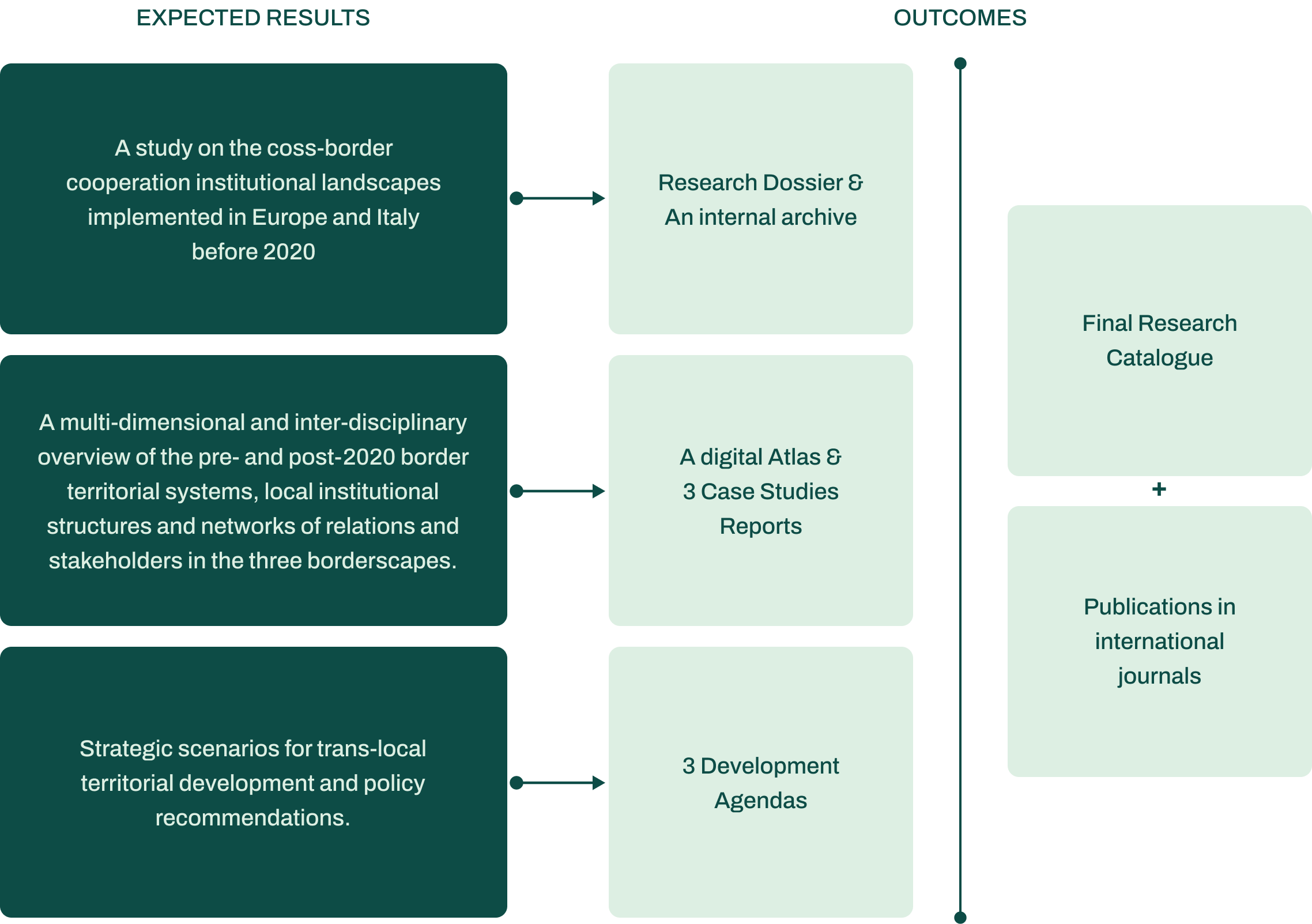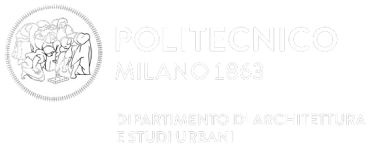Illuminating Resilient Transboundary Ecologies: Spaces, Imaginations and Experiences
EXPLORE
Research Abstract
The project aims to investigate the impacts of a set of interconnected crises, encompassing socio-economic, humanitarian, ecological, and health-related challenges, including the Covid- 19 pandemic, which have significantly affected Italian border areas in recent years. Rather than framing these regions solely as ‘border areas’ or ‘peripheries,’ we adopt the concept of ‘borderscape’ to address the complex entanglement and ‘constellations’ of spaces, relations, and practices that shape these territories (Brambilla 2015). The primary focus of the study is to map, analyze, and understand the complex intertwining of (old and new) re-bordering, de-bordering and cross-bordering processes that have emerged along and across Italy’s borders prior to and following the 2020 pandemic. To do so, the project will delve into three case studies located on Italian national borders (Italy-France, Italy-Austria and Italy-Slovenia), allowing for a comprehensive understanding of the diverse challenges and opportunities faced by these regions.
Prin Project 2022
“Italian Borderscapes After 2020” project has been awarded the PRIN 2022 Grant, funded by the European Union – NextGenerationEU (20225TN2R9), Mission 4, Component 1, CUP D53D23010950006.
The PRIN programme (Research Projects of Significant National Interest) is designed to fund public research projects, with the aim of fostering the strengthening of national scientific foundations, also with a view to more effective participation in European initiatives relating to the European Union’s Framework Programmes.



Research questions
1
To what extent have the institutional frameworks of cross-border cooperation and border management in Europe been influenced by the Covid-19 pandemic from 2020?
2
Which new forms of territorial fragilities and synergies and which strategies have emerged and been produced by alliances of local actors and citizens to provide solutions to the social and economic distress caused by the health emergency since 2020?
3
Which different perceptions of tangible and intangible (national, regional and local) borders have emerged among local communities?
4
How to imagine new territorial development pathways, tools and practices of multi-level governance between cross-border territories in a post-pandemic recovery phase, considering their (old and new) interdependencies and the synergies activated by the emergency?
Research objectives, expected results and outcomes
Re-frame cross-border cooperation and border management mechanisms in Europe before and after 2020, and understand what happened across and along EU member states’ borders in the past years, with a specific focus on the Italian context and its bilateral relations;
Identify in the three study contexts – Italy-France, Italy-Austria and Italy-Slovenia – both: a) the new territorial fragilities pushed by the multiple crisis; b) the synergies and coping strategies that have been activated by alliances of local stakeholders and citizens to provide bottom-up and/or institutional responses to the social and economic distresses caused by the sanitary emergency.
Explore pathways of resilient territorial development among cross-border territories in a permanent crisis conditions / post-pandemic recovery phase, considering their (old and new) interdependencies, integrating the existing strategies, plans and policies at the regional and local scale.
Workplan, expected results and outcomes


Workpackages
1
WP 1 – LITERATURE REVIEW
WP1 aims to build a robust and updated theoretical and analytical background about the global polycrisis on European border areas and institutional cross-border cooperation frameworks, at different scales and different stages of the pandemic, with a focus on the Italian context at the national level.
2
WP 2 – FIELDWORK
WP2 aims to validate desktop research through empirical research, on-site data collection and content analysis. This will require verifying in the three border contexts – with the specific “test sites” for each border area selected: a) the socio-spatial and the tangible/intangible impacts and perceptions of re-bordering dynamics activated or accelerated by different crises; b) the spontaneous and self-organized initiatives implemented by local communities in border areas to deal with such situations; c) the perception of the changes in the border interactions in the past five years.
3
WP 3 – SCENARIOS
WP3 focuses on the production of new territorial images and guidelines to bridge future scenarios of development for the cross-border territories in a post-pandemic recovery stage, in partnership with relevant stakeholders and actors. This activity will draw on the robust and extensive research performed in the previous WPs, also reconsidering the existing plans, strategies, and territorial cooperation policies.
4
WP 4 – PROJECT MANAGEMENT
WP4 is devoted the project’s coordination and budgeting, along with the organization of activities of knowledge co-production among the research units, together with adequate spaces for encounters and dialogue throughout the project implementation, also in cooperation with the project’s international advisory board.
5
WP 5 – DISSEMINATION
In accordance with the European Charter for Researchers, the project will result in a number of outcomes and activities to be disseminated and communicated among academic and non-academic audiences. The research units will put special effort to ensure that relevant international and local stakeholders (such as public authorities, consortia of municipalities, cross-border agencies, civil society organizations, private foundations, economic actors, etc.) in Italy and the EU are informed of the research findings.0?



